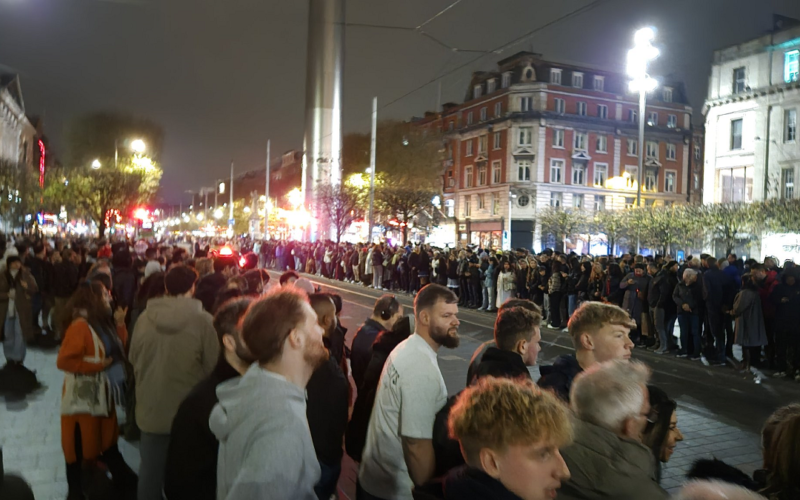Played like a fiddle.
No Show
You see an ad for a glitzy Halloween parade. You spend weeks getting your costume together (or maybe you settle for a blanket over your head). On the big night, you show up with thousands of others.
Suckers, all of you. There’s no procession, no parade. That’s right: you just got duped by a totally fake ad campaign, generated with AI.
This is what happened in Dublin last night, where after waiting for at least an hour, the attendees slowly caught on that nothing was actually planned for that evening. Photos and videos shared on social media capture the total anti-climax of a scene.
“No Gardai around” — that’s what they call cops in Ireland — “no official announcement, people waiting on the wrong side of the road…” tweeted one person who turned out to the nonevent. “Someone did pull a big #hoax #prank.”
The crowd got so big that the Irish police had to make an announcement, putting the issue to bed: “Please be advised that contrary to information being circulated online, no Halloween parade is scheduled to take place in Dublin City Centre this evening or tonight.”
Dupe Loop
The culprit was a craftily fabricated ad campaign originating from a website called myspirithalloween.com. It claims to be “your ultimate destination for all things Halloween,” and for some reason prominently features a picture of Portuguese soccer star Cristiano Ronaldo.
But not all was as it seemed. Despite the site claiming to be based in Illinois, “all signs point to the person(s) behind it being based in Pakistan,” Ciarán O’Connor, a researcher and investigator at the Institute for Strategic Dialogue, wrote in a thread on his findings.
“The ‘My Spirit Halloween’ site was likely created for [ad revenue] purposes,” he suggested.
And it goes deep. The scheme included fake Facebook pages to promote the parade, real photos from previous parades done by the performance company Macnas, and tons of AI-generated text, O’Connor found.
The word “transform” is used everywhere on the website. The about page lists four seemingly fake writers with portraits that you’d clock as AI-generated from a mile away. According to O’Connor, the person who runs the website admitted that at least 30 percent of the content was made “with the assistance of AI,” while some was done by human contractors.
And with the bogus page as a launching point, a combination of runaway algorithms, tricky SEO, and actual social media word-of-mouth handled the rest, especially on Facebook and Tiktok.
Sites Unseen
Needless to say, this is a pretty clear-cut example of the misinformation that AI can perpetuate. Chatbots make it virtually effortless to generate all the ad copy and flowery text you need to fill up a fake website. And if need be, it can fake images for you, too.
Some of the blame should go to social media sites, however, which reward SEO-ified garbage AI content.
Facebook in particular seems institutionally addicted to promoting AI slop, paying money to creators who game its algorithms by shoving surreal, machine-amalgamated imagery into users’ feeds for the high engagement they generate on the platform.
In sum: the misinformation machine is hummin’.
More on AI: Perplexity AI CEO Sputters When Asked to Define “Plagiarism” Onstage
Source link
lol

